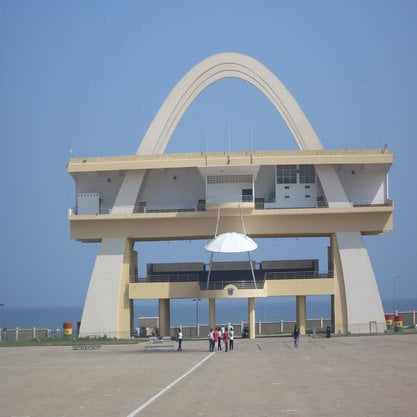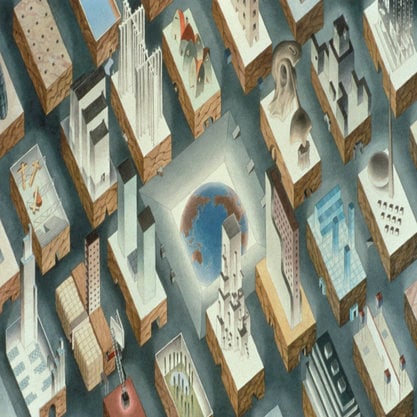Article
Bruce Onobrakpeya (1932--) By Cantone, Helena
Article
Printmaker, sculptor, painter and inventor of new techniques, Bruce Onobrakpeya was one of the major figures to emerge from the Zaria Arts Society in Nigeria in the 1950s.
An innovator and experimentalist in printmaking, Onobrakpeya developed many techniques including “bronze lino relief,” “hydrochloric acid accident,” and in 1967, a deep etching technique called “plastograph” that uses plates cast in plaster. In a continuous process of innovation, Bruce started making prints from these “plastercasts,” then coated the original plates with bronze in order to make the casts into pieces of art work themselves. In later years, Onobrakpeya recast these original plates into columns of resin to create sculptural installation-shrines, thereby not only reinventing the idea of printing itself, but reinterpreting African shrine traditions to give these ritual places new meanings. Together with his generation of modern artists rooted in the historical moment of African independence, Onobrakpeya helped to critically question Eurocentric assumptions by re-writing their own history.


